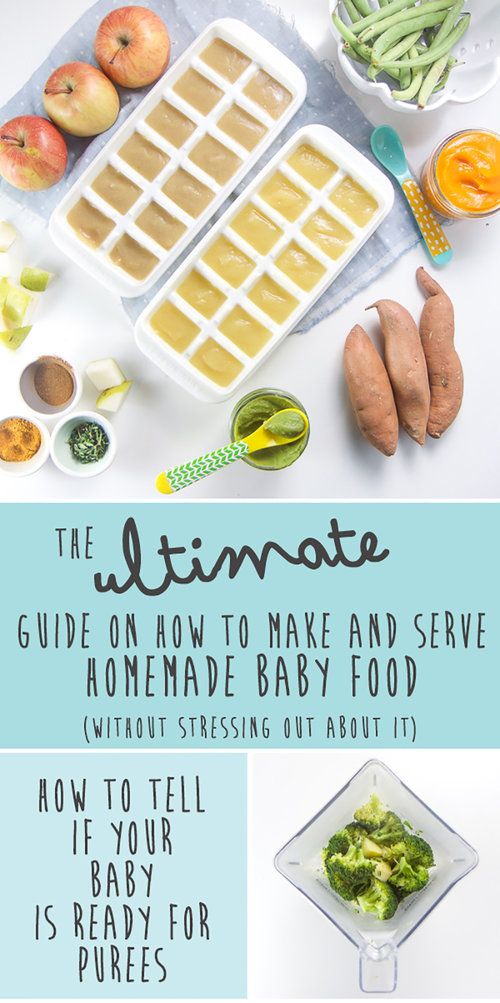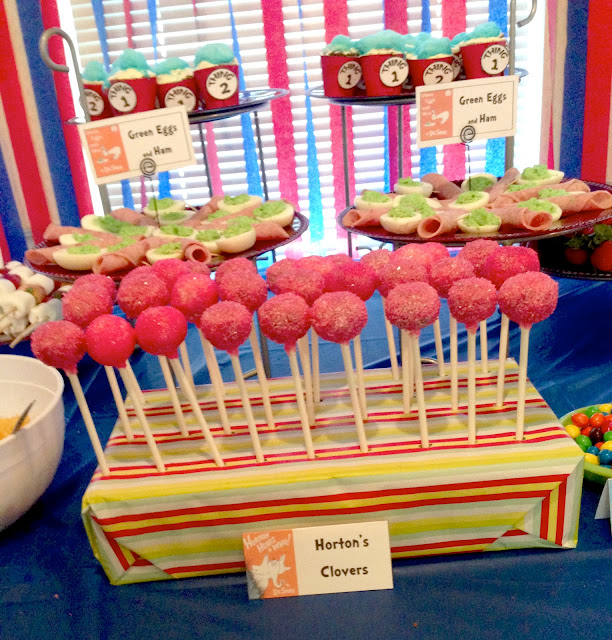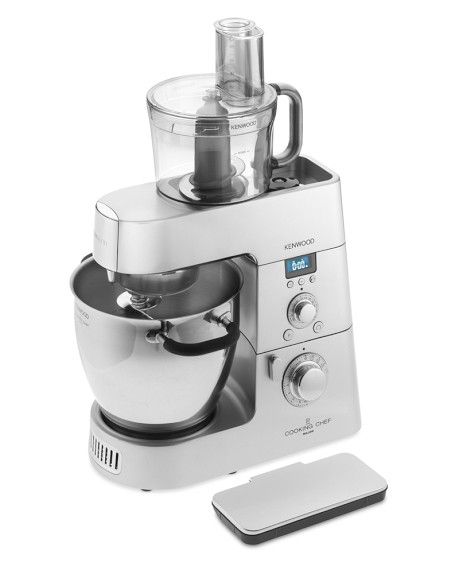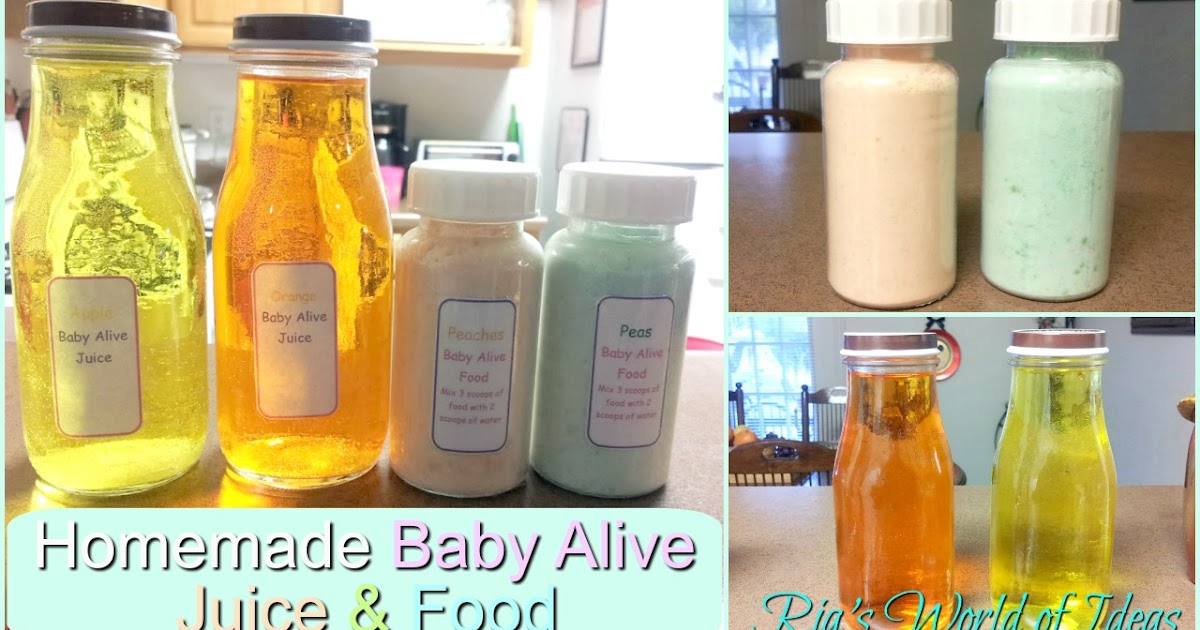What is baby food made out of
How to Make Homemade Baby Food
Contributors: Jill Weisenberger, MS, RDN, CDE, FAND
Published: December 17, 2019
Reviewed: November 12, 2019
Wiktory/ThinkstockBreastfeeding is recommended exclusively until six months of age and along with solid foods until at least one year of age. Talk with your pediatrician about the best time for your baby to start solids and how to introduce them. Monitoring for possible food reactions is especially important, as is providing foods that contribute key nutrients like protein, iron and zinc.
If your little one is ready for solid foods, you have numerous nutritious options at the supermarket, such as iron-fortified cereal, to feed your baby. And, if you prepare homemade baby food, you have even more variety: Not only can you pick from an assortment of fruits and vegetables in the produce section, but you can also use frozen veggies and fruits canned in their own juices.
Making your own food can help expose babies to more flavors, which may help them become more adventurous eaters. Furthermore, by managing added sugars and salt, you're in greater control of your baby's nutrition.
Follow these guidelines if you choose to prepare homemade baby food:
Getting Started
If you are interested in preparing your own baby food but find the idea daunting, start with just a few homemade items. Mashing a very ripe avocado or banana is a good place to begin. After your baby responds well, you can try preparing nutrient-rich foods that might not be as common in the baby food aisle, such as beets, broccoli, turnips, asparagus, spinach, blueberries, kale, mango and papaya. Just be sure to mash or puree the foods for your baby and serve only one new single ingredient food at a time.
Use items that are in season or foods that you’re preparing for the rest of the family, but without the added sugars, salt and seasonings. Everyone in the family will get to enjoy the same nutritious foods, which will save you time and effort.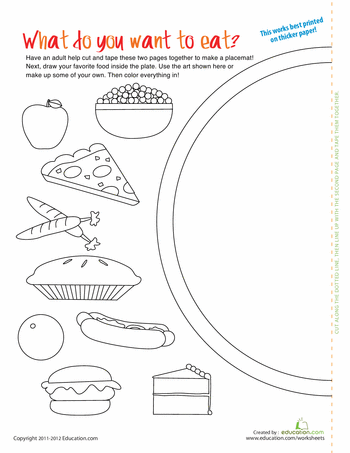
Preparing Food
Be vigilant about sanitation. Use only well-scrubbed and washed produce, clean hands, utensils, cutting boards and countertops.
- Wash and peel produce and remove any seeds or pits. Take special care with fruits and vegetables that are grown close to the ground as they may contain spores of Clostridium botulinum or contain other harmful bacteria that can cause food poisoning.
- Cook food until it's very tender. Steaming and microwaving in just a little water are good methods to retain vitamins and minerals in fruits and vegetables. When cooking meats and fish, remove all gristle, skin and bones before cooking.
- Puree or mash fresh fruit or fruit canned in its own juice. Never add honey to foods or drinks for children under 12 months, as it may contain Clostridium botulinum spores. Also avoid adding corn syrup or other sweeteners as they only provide extra calories but not nutrients.
- Make sure the texture and temperature are appropriate.
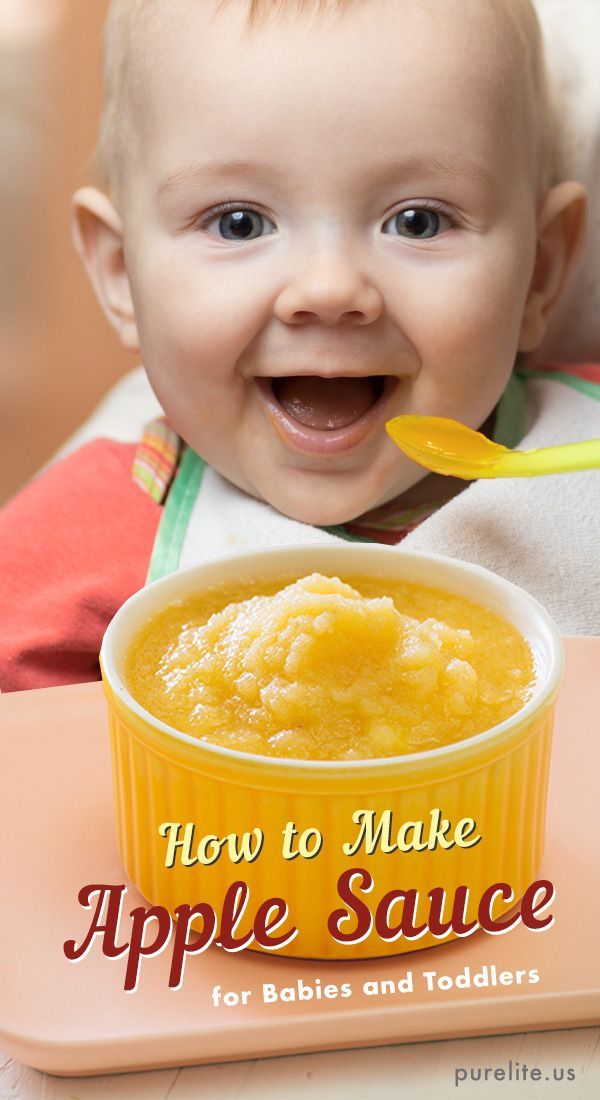 Some foods pose a choking risk and are not recommended for infants, such as whole grapes, raisins, and pieces of hot dog. Pureed foods can be thinned, if needed, by adding breastmilk, formula, or water. Cow’s milk and milk alternatives should not be used during the first year. After warming solid foods, be sure to mix thoroughly and recheck the temperature so as not to burn the infant’s mouth.
Some foods pose a choking risk and are not recommended for infants, such as whole grapes, raisins, and pieces of hot dog. Pureed foods can be thinned, if needed, by adding breastmilk, formula, or water. Cow’s milk and milk alternatives should not be used during the first year. After warming solid foods, be sure to mix thoroughly and recheck the temperature so as not to burn the infant’s mouth. - Cook eggs, meats and poultry until well done. Babies are especially susceptible to food poisoning caused by eating undercooked meats, poultry and eggs. Be certain that all meats and fish are cooked to proper temperatures; 145°F for fish and whole cuts of beef and pork, 160°F for ground beef and egg dishes and 165°F for all types of chicken and poultry or leftovers.
- For convenience, freeze prepared baby food for later use. Freeze it in small portions in a clean ice cube tray. Once frozen, put the cubes into clean, airtight, freezer-safe food containers for single-serving portions.
 As another method, use the "plop and freeze" technique: plop meal-size spoonfuls of pureed food onto a cookie sheet, freeze, then transfer the frozen baby food to clean freezer-safe containers for storage in the freezer.
As another method, use the "plop and freeze" technique: plop meal-size spoonfuls of pureed food onto a cookie sheet, freeze, then transfer the frozen baby food to clean freezer-safe containers for storage in the freezer. - If you're cooking the same food for the rest of the family, remove the baby's portion before adding salt and seasonings. A baby's taste buds can be very sensitive. As the baby grows and becomes more used to table food, feel free to add seasonings other than salt.
Keeping Baby Safe
Preparing homemade baby food requires extra care to keep baby's food safe and to retain the nutrients from fresh foods. After you've prepared the food, either serve it or refrigerate it right away. Keep homemade baby food in a covered container for one or two days in the refrigerator or one to two months in the freezer with a label and date. Small portions served in separate dishes are ideal because any food that was served, but not eaten, must be thrown out.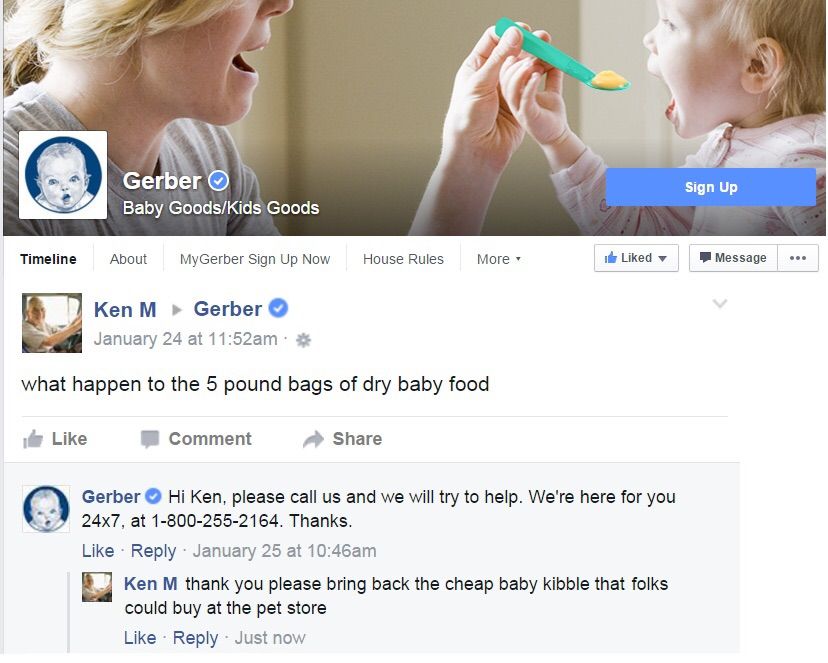 Bacteria thrive in the mouth, so if a spoon goes into the baby's mouth and then touches the food, that food should not be saved for later.
Bacteria thrive in the mouth, so if a spoon goes into the baby's mouth and then touches the food, that food should not be saved for later.
It's Fine To Buy Store-Bought Baby Food Too
Commercial baby foods are nutritious options for feeding baby, too. Today's commercial baby foods provide balance and variety with carefully controlled and consistent nutrient content, so don’t worry if you supplement your baby's intake with commercial baby foods. Be sure to talk to your baby's health care provider about which foods are best for your baby and if any dietary supplements may be recommended.
Tags
Find a Nutrition Expert
Looking for credible nutrition information and recommendations? The Academy of Nutrition and Dietetics' network of credentialed food and nutrition practitioners are ready to help!
See Directory
The (ugly) Truth About Baby Food Pouches | Are Homemade Pouches For Babies Good Or Bad | Do Baby Food Packets Grow Mold | Amara
The (Ugly) Truth About Baby Food Pouches
It’s hard to believe that baby food pouches only came on the market about a decade ago, give or take. To put it mildly, these things became insanely popularfast. In 2018, theNew York Times reported that pouches account fora full quarter of the baby food market —wow. This is a pretty staggering rise to prominence, when you think about it.
To put it mildly, these things became insanely popularfast. In 2018, theNew York Times reported that pouches account fora full quarter of the baby food market —wow. This is a pretty staggering rise to prominence, when you think about it.
In real life, the prominence bears out. I see pouches everywhere, and it’s true: pouches take up at least 25% of the shelf space on the baby food aisle (which is itself a dizzying array of products and options…).
If you’re a parent, we probably don’t have to tell you why pouches became so popular so quickly: they’re the epitome of convenience. Besides the fact that kidsreally like them, pouches require no prep, no feeding, no refrigeration, no mess, and virtually no clean up. They’re easy to pack, easy to store, easy to hand over, and given that so many of them are organic and/or contain exotic fruits and vegetables, they’re really easy to feel good about.
But too much of anything is not always a good thing.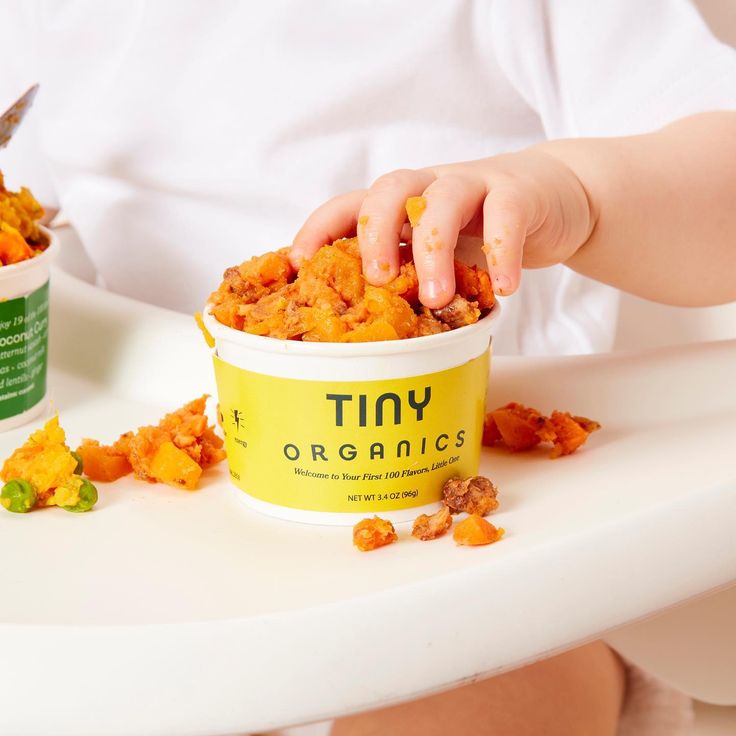
Pouches are a great option for any number of circumstances and situations (more on this shortly…), but according to the best experts, over relying on them is actually problematic. Here’s why:
-
Pouches don’t teach young children about food and eating.
Every time a baby or toddler sits down to eat presents a learning opportunity in more ways than one. And unfortunately, pouches detract from that learning more than they contribute to it.
Eating — whether it’s by hand or getting spoon-fed — entails using fine motor skills, coordination, and specific oral mechanics. It’s a tactile experience that furthers a child’s developmental abilities in multiple areas. If eating is an actual activity, “eating” from a pouch is passive. It is, in a way, a lost developmental learning opportunity.
When children eat solids — including purees — they’re learning to take bites, to move food around in their mouths, to use their tongues, and to chew. Pouches demand none of this of children. As Kara Larson, a feeding specialist and speech language pathologist at Boston Children’s Hospital said in an interview: “if children are just sucking from a pouch all the time, we worry that some of that tactile experience with food might be lost.”
As Kara Larson, a feeding specialist and speech language pathologist at Boston Children’s Hospital said in an interview: “if children are just sucking from a pouch all the time, we worry that some of that tactile experience with food might be lost.”
Eating is also a sensory experience, and this is another area in which pouches come up short. Babies and toddlers learning to eat take ineverything about foods — feeling, seeing, and smelling are a huge part of how they learn about different foods. With pouches, all this sensory intake is essentially lost: children can’t see what color their “food” is, can’t smell it by and large, and don’t feel its textures.
Not to mention, to a large extent,they also can’t even really taste it. Here’s what I mean…
The main ingredient in most pouches tends to be a sweet food, usually a fruit. And those sweet foods effectively dominate the entire flavor profile. So even if a pouch does contain spinach or broccoli or the like,children can’t taste it. Like, at all.
Like, at all.
Indeed, partly because of this sweet-taste-masking effect, young children usually can’t differentiate between any of the flavors in any given pouch. I found it helpful to consider what’s going on for me whenever I have a smoothie — I can often pull outsome of the individual flavors, but not all of them. And even the singular tastes I can detect,I can only detect because I already know what they taste like.
Babyhood and toddlerhood together comprise a critical period of time for learning about foods — and learning to like foods! If toddlers don’t have experience with actual vegetables, they may be less likely to enjoy them down the road. As pediatrician Dr. Natalie Muth told the Times, “kids need the taste of what the actual food is to come to like it later.” IOW, apple-pear-kale pouches aren’t helping children learn to love kale.
All of this is to say that children don’t learn much about foods (if anything at all) from pouches — they’re not becoming familiar with the foods or even the flavors included — which is a problem because this is a huge piece of how children come to actually like foods.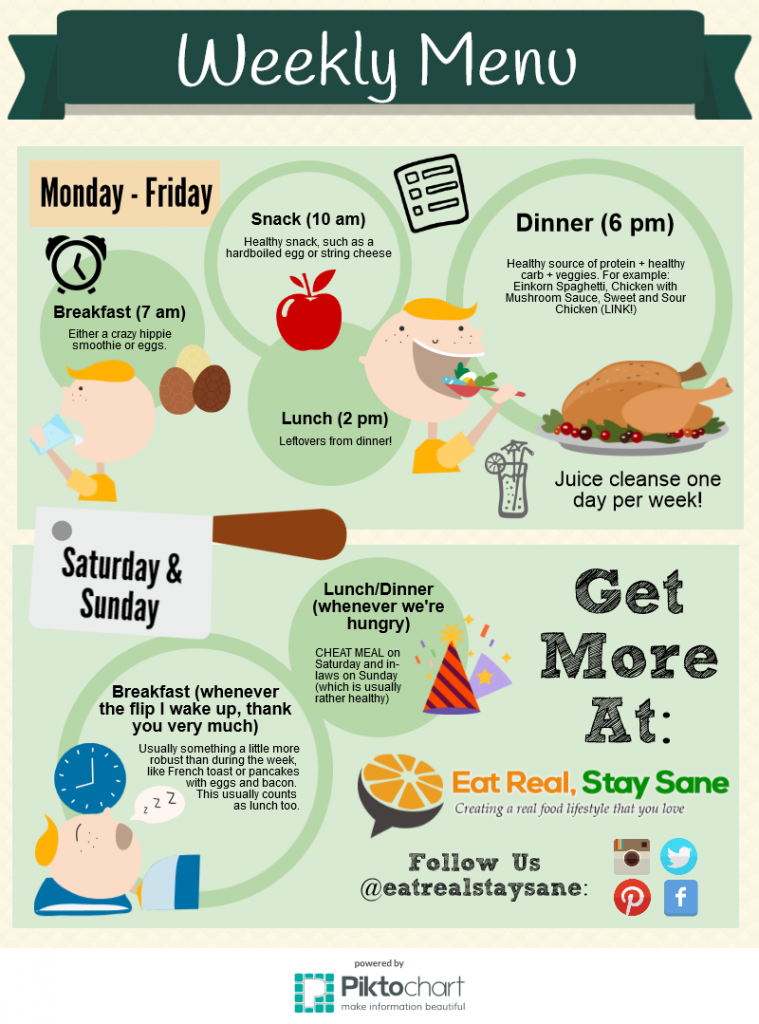
-
Pouches aren’t as nutritious as manufacturers would like us to believe.
There is ahuge problem in the way these pouches are marketed — it’s totally misleading, in my opinion.
We parents are led to believe that pouches are a great way to “get” our children to eat healthy, and that we can trust a pouch to put plenty of fruits and vegetables into our kids’ systems. Many pouches also contain foods you won’t find in conventional baby food jars, like quinoa or kale or pomegranate or avocado — and the message we are led to believe is that these inclusions make poucheseven more healthy. They contain all these awesome foodie foods! But pouches actually aren’t all that healthy, and as mentioned above, the delivery mechanism — single-texture blends that children “drink” more than they “eat” — isn’t teaching children to come to know and loveactual fruits and vegetables.
Some pouches contain added sugars (grrr), and even among those that don’t the sugar content is still disproportionate compared to the real foods they started out as.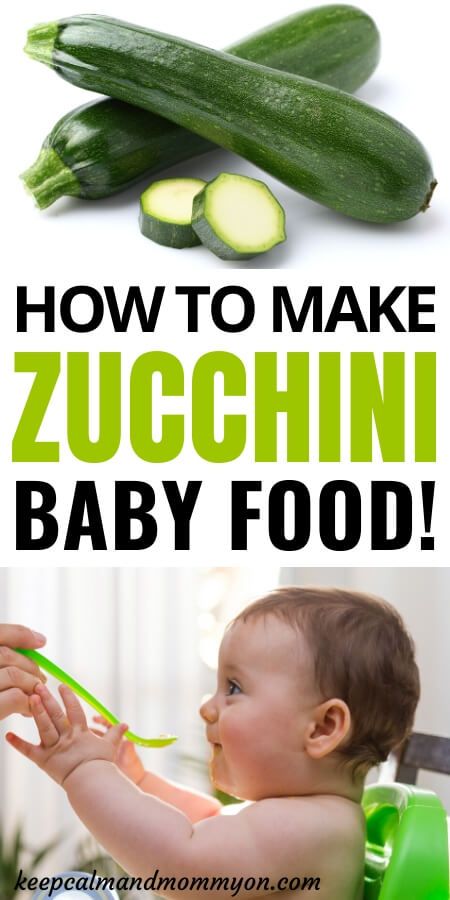 This is true of jarred baby food in general (the high-heat processing that ensures shelf-stability also nukes all the “good stuff,” including vitamins, minerals, fiber, and flavor, while leaving undesirable contents like sugar) — but some research indicates that pouches in particular tend to have higher sugar contents than baby food jars.
This is true of jarred baby food in general (the high-heat processing that ensures shelf-stability also nukes all the “good stuff,” including vitamins, minerals, fiber, and flavor, while leaving undesirable contents like sugar) — but some research indicates that pouches in particular tend to have higher sugar contents than baby food jars.
The lack of fiber and texture is also a huge loss — because fiber is super important for digestive health and also contributes to feeling satiated. In fact, some experts worry that because children can suck down pouches so much more quickly than they could eat the same thing (and they aren’t getting any measurable amounts of fiber from them), pouches might actually impact children’s learning about feelings of satiety.
The convenience factor, too, can be so damntempting. Because they are so easy and children like them so much, many parents (myself included — guilty) use pouches as a sort of management strategy in moments of “crisis,” to put an end to things like public tantrums or epic stretches of whining. Admittedly, this probably sends our kids some mixed messages, namely that emotional or inappropriate behavior can and will be tamed with food (read: sugar). Without being alarmist about it, it’s not unreasonable to think that these aren’t necessarily the healthy, ideal lessons many of us are aiming to teach our kids.
Admittedly, this probably sends our kids some mixed messages, namely that emotional or inappropriate behavior can and will be tamed with food (read: sugar). Without being alarmist about it, it’s not unreasonable to think that these aren’t necessarily the healthy, ideal lessons many of us are aiming to teach our kids.
______
All this said — there is a time and a place for everything, and you don’t need to empty your pantry of pouches for all eternity or swear them off entirely. The problem with pouches, as it were, is only apparent if babies and toddlers are consuming them A LOT. As in, multiple pouches per day. As in, so-many-pouches are displacing other sources ofreal food.
Here are some helpful thoughts from experts on when and how to incorporate pouches:
Pouches may be a parent’s best friend in certain situations — and the hands-down “winner” in that category is TRAVEL. Whether you are making a road trip, day trip, plane trip, or whatever, having a pouch on hand for a snack can be life-saving. These kinds of situations are often about getting through them, so do what you need to anddon’t feel guilty about it!
These kinds of situations are often about getting through them, so do what you need to anddon’t feel guilty about it!
Experts suggest having some sort of “ground rules,” so to speak, about using pouches — as opposed to using them randomly, on the fly, or as a reactive strategy to calm down your child. Put another way, they recommend making decisions about when and how you plan to use pouches ahead of time, rather than in the moment.
Look for products with no added sugar, and consider buying smaller sized pouches if they’re available.
Simply choosing to feed your child the contents of a pouch can change a lot about the situation — it reintroduces the feedingexperience to the equation, is much more interactive, and also takes more time. This isn’t to say that children need pouches — not at all. Pouches were made for and marketed toUS, parents. And there are plenty of reasons to like them. But our children don’t need them, and they’re certainly not benefitting from them.
This isn’t to say that children need pouches — not at all. Pouches were made for and marketed toUS, parents. And there are plenty of reasons to like them. But our children don’t need them, and they’re certainly not benefitting from them.
As we said, there’s a time and a place for everything — and pouches aren’t “all bad”! When we offer them with intention and in moderation, pouches can be wonderful. But it’s also important to see beyond the deceptive marketing that would have us believe pouches are a boon to any child’s culinary education. Not so — as always, in the end, real food wins…
How Baby Food Pouches are Made (A Behind the Scenes Look) & How We're Different
Most parents can admit to staring and staring at the supermarket shelf, looking the baby food aisle up and down, wondering what is the best possible baby food to give their baby. There are more flavors of baby food pouches available than there are cereals, but there is one thing they all have in common: the way the baby food pouches are made.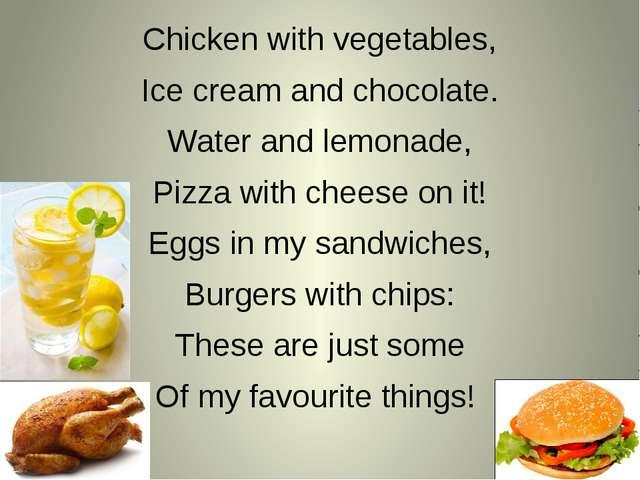
But wait, they’re 100% fruit right? They don’t list “sugar” as an ingredient… They are “organic,” brain smart, and filled with fiber. How can these squeeze pouches be badfor your little one?
When we started Amara, we knew that no one was getting more time anytime soon. So we searched high and low for the best way to bring fresh food to supermarket shelves without sacrificing essential nutrients and vitamins.
We stumbled across a technique that was used centuries ago by the Incans to preserve food. The Incans didn’t just store their food where they lived. They would climb up to the highest mountains, at a much higher elevation than where they lived, and store their food there. Why would they store their food so far away from where they cooked? It turns out the Incans were not just trying to get exercise, they were on to something. The pressure and cold of the high mountains actually preserved the food, all while maintaining the taste, texture and nutrients of fresh fruits and vegetables.
Crazy right? Well, we started researching more to see how we could use this ancient wisdom. That’s when we found the technique we use today. At Amara, we minimally process the fruits, veggies and grains so you can get the closest thing to homemade when you don’t have time to make it yourself. We just take out the water, so you can take homemade with you, anytime, anywhere.
Now that’s what we do. But what do other baby food companies do? Why are those pouches so high in sugars? Why do they have the same texture and consistency, all kind of tasting like apples?
Creating a shelf-stable pouch of baby food
Shelf-stable means that the food can sit on a shelf without refrigeration or spoilage for quite some time. Jarred shelf-stable baby food lasts for about two years. Pouch-stored shelf-stored baby food lasts for one year. This lets supermarkets and baby food companies take their time in selling the product because they don’t have to worry about spoilage.
Unfortunately, the way they create shelf-stable food isn’t exactly good for its nutritional value. They have to use processes that remove the causes of spoilage (the bad stuff), but these same processes also reduce nutrition (the good stuff).
The extraordinary high levels of heat the traditional jars and pouches are using is the major culprit. Heat breaks down vitamins and destroys enzymes that are needed for proper digestion. Now, after so much heat – you are left with a boiled down mixture that is closer to jam than wholesome fresh food.
So let’s follow how traditional baby food is made….
First, most shelf-stable baby food companies don’t process raw vegetables and fruits themselves. They buy them from other companies in the form of a puree or a concentrate. These purees and concentrates start by chopping and washing vegetables and grinding them down (which heats up the puree.) Next, stones, skins, and seeds are removed, but along with these, the fiber is also removed. This creates a smooth consistency, but babies need fiber!
This creates a smooth consistency, but babies need fiber!
So far, it’s like making homemade baby food, only maybe not so much heat because you’re not using industrial equipment (you don’t normally heat your food over 185 degrees F for a long period of time)…. But that’s not it.
Then, the puree is “deareated” to remove oxygen (which causes food to spoil) and then pasteurized. As we all know, pasteurization requires high heat for a long time to kill bacteria. This high heat-processed puree is sent to the baby food companies. If a concentrate is called for, the puree goes through an evaporator to draw out water before shipping. If you’ve ever tasted frozen juice concentrate, you know it’s like swallowing a spoonful of sugar.
Now, enter baby food companies:
Baby food companies buy these pureed (can we still call them fruits and vegetables?) and blend them to create their flavors. They sometimes add water for consistency, and they can also add other things.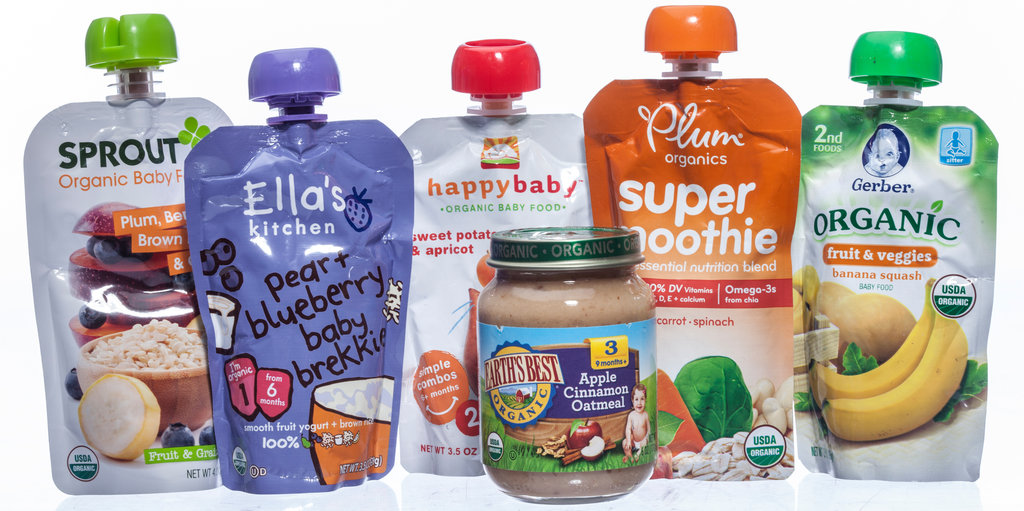 Acids (e.g. citric acid) is added for further bacterial control as well as to prevent browning of the product over time. Nutrient powders may also be added to make up for the lost nutritional value caused by the earlier processes.
Acids (e.g. citric acid) is added for further bacterial control as well as to prevent browning of the product over time. Nutrient powders may also be added to make up for the lost nutritional value caused by the earlier processes.
So let’s go over that….
- Company X grinds fruit or vegetable down to a puree. Heat step to keep it shelf stable and ready to ship to Baby Company.
- Baby Company blends said purees with their recipes. May add nutrient powders, emulsifiers or acids to keep it looking presentable.
- Usually another heat step here to make sure nothing is alive (remember, we have to kill the bad stuff….Oops! There goes the good stuff too.)
Ok, so now we have that pureed recipe of baby food company X. What next?
Then the puree has to get packaged. If it’s in a jar, it’s the same process used for home canning, which requires high levels of heat. But did you know that pouches have to be heated as well? This has to be done to kill any bacteria in the pouch, but again, it raises the temperature of the food. These pouches, while convenient, do contain compounds that might leach into the food under high heat such as BPA and aluminum.
These pouches, while convenient, do contain compounds that might leach into the food under high heat such as BPA and aluminum.
So now you have your pureed heated mix according to the recipe for baby food company X. Then it’s put in a pouch. The pouch is heated AGAIN at high levels to make sure that there is no bacteria or mold in the pouch.
…. Pausing. We’re pretty far from those fresh fruits and veggies you pinned right?
Right.
So. Shelf-stability may help consumers know they’re getting unspoiled baby food, but by the end of it, fruits and vegetables have been turned into a kind of jam with no texture and not the best nutrition. (Ever wonder why your baby loves the pouches but doesn’t like the real veggies when you make them?)
Now, I want to pause here. We are all feeling pretty bad about those pouches and jars right? I mean, we didn’t paint the prettiest picture here. Because it’s not. BUT. I do want to stress here, there are moments that your baby is screaming or you’re in the car and the pouch really is the easiest option. And THAT’S OKAY. We don’t walk around in a perfect white onesie all the time, do we? We know there are times for the pouch, but just treat it as an occasional snack or dessert, not an everyday kind of thing.
And THAT’S OKAY. We don’t walk around in a perfect white onesie all the time, do we? We know there are times for the pouch, but just treat it as an occasional snack or dessert, not an everyday kind of thing.
How Amara differs
We look carefully at every single ingredient and source it the best possible way. That’s right. We don’t just use one co packer that hands us a finished product. We look at every ingredient and find the best process and combination for your little one. We don’t use additives; we don’t use emulsifiers or any of those funny fillers. We just do real food, real ingredients. We bring you the best possible baby food, without you having to chop and cook everything yourself. It's a difference you can see:
Imagine the fruits and veggies just without the water. Now that's a pouch you can actually feel proud of. At Amara, baby food is made better to taste better.
Get 15% off your first purchase with us with code:
ONLYTHEBEST
Sources:
https://www. stlouischildrens.org/health-resources/pulse/pros-and-cons-baby-food-pouches
stlouischildrens.org/health-resources/pulse/pros-and-cons-baby-food-pouches
https://www.firstfiveyears.org.au/child-development/the-important-facts-on-baby-food-pouches
https://www.cleveland.com/news/2019/03/baby-food-pouches-may-pose-risks-for-development-health-when-overused.html
https://pubmed.ncbi.nlm.nih.gov/31340487/
https://www.nytimes.com/2018/06/19/well/rethinking-baby-food-pouches.html
https://www.nytimes.com/2020/04/17/parenting/baby-food-pouches.html
http://science.howstuffworks.com/innovation/inventions/5-ancient-incan-inventions5.htm
USDA Table of Nutrient Retention Factors
http://nutritiondata.self.com/topics/processing#ixzz1fPecqOzH
http://www.livestrong.com/article/547867-what-does-cooking-do-to-vitamin-c/
https://www.scientificamerican.com/article/raw-veggies-are-healthier/
http://www.beyondveg.com/tu-j-l/raw-cooked/raw-cooked-2f.shtml
http://feedkids.com/2010/09/freeze-dried-dehydrated-fresh-frozen-or-canned-what-is-the-best-source-of-nutrition/
Gupta et al 2013, Retention of nutrients in green leafy vegetables on dehydration; J Food Sci Technol 50 (5), 918-925.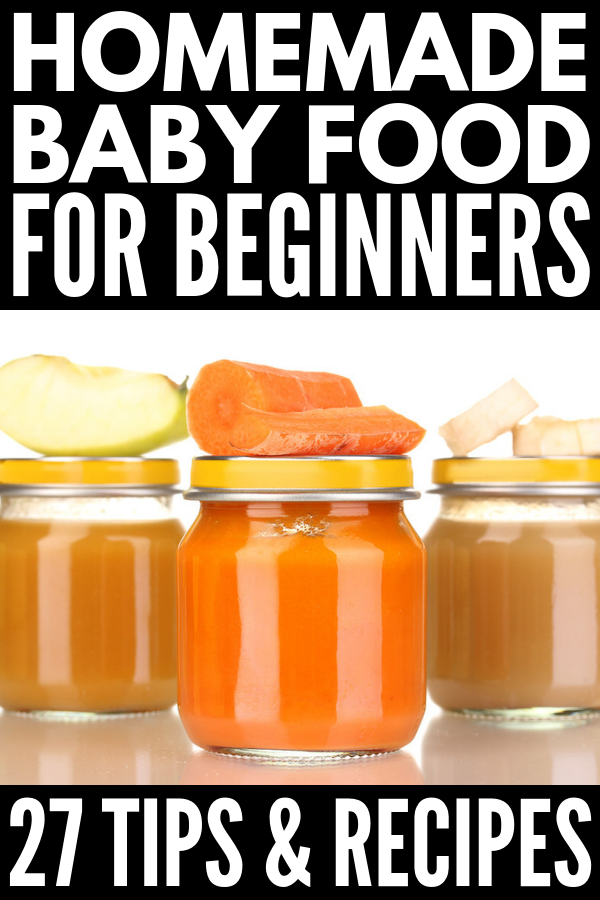
how to choose and what kind of baby food is better?
The ideal "baby food" for an infant is breast milk. However, not all mothers can breastfeed their baby, usually this is due to the health of the mother or child. It happens that the woman herself has a serious condition after childbirth and in the early postoperative period, reduced lactation or diseases in which breastfeeding is contraindicated. In such cases, the baby is given formula milk - this is the only alternative to mother's milk. Subsequently, at four to seven months, complementary foods should be introduced into the child's diet, regardless of whether he is breastfed or artificial. The mother is faced with the task of choosing the right baby food for complementary foods. nine0005
In this article, we will talk about what foods for babies are and how to choose the best baby food.
Legislation under "baby food" means food products that meet the physiological needs of the body of a child under 14 years of age. And nutrition for young children is food intended for children from birth to three years[1]. It is necessary to make a diet taking into account the age of the baby and the characteristics of his physical condition.
And nutrition for young children is food intended for children from birth to three years[1]. It is necessary to make a diet taking into account the age of the baby and the characteristics of his physical condition.
The Union of Pediatricians of Russia created the National Program for feeding children in the first year of life and the National Program for optimizing the nutrition of children from one to three years old [2]. They describe recommendations regarding what formula to feed the baby from birth, how to introduce complementary foods and expand the baby's diet. These programs provide detailed information on what nutrients and nutrients should be included in the diet of children of different ages. nine0007
First you need to figure out what kind of baby food is [3]. Products for toddlers can be divided into two categories:
Infant formula. There are for children from birth to six months (formula 1 mixtures, or initial), from six months to a year (formula 2) and from a year (formula 3). The composition of such baby food is adapted, that is, as close as possible to the composition of breast milk.
The composition of such baby food is adapted, that is, as close as possible to the composition of breast milk.
- In the initial mixtures, the amount of protein is reduced to 1.2-1.5 g / 100 ml - in accordance with the composition of breast milk. They also changed the fat and mineral profile. The initial mixtures are enriched with such an essential amino acid as taurine, and micronutrients, probiotics, vitamins. nine0022
- After six months, the baby's need for protein increases, mother's milk changes its composition. And babies on artificial feeding begin to be fed with a more nutritious mixture of formula 2. Taurine is no longer always needed: the body of a baby aged from six months to a year is able to synthesize this amino acid itself. Meanwhile, the content of iron, calcium, zinc increases compared to the initial mixtures, because by this age the child's reserves of minerals received from the mother during pregnancy are depleted, and they need to be replenished. nine0022
- A child's diet changes after one year - he is already able to eat a variety of solid foods.
 However, it is advisable to continue to feed him with a mixture, though already formula 3. Pediatricians recommend it as a source of vitamins and minerals that the baby can easily absorb.
However, it is advisable to continue to feed him with a mixture, though already formula 3. Pediatricians recommend it as a source of vitamins and minerals that the baby can easily absorb.
Complementary foods As we have already noted, it is introduced when the baby is four to seven months old. This interval is called the "critical window" and is considered optimal for the initiation of complementary foods for several reasons:
- The baby needs a wider range of minerals, vitamins and other nutrients. In addition, his baby's digestive system is already ready to accept more solid and complex foods than mother's milk or infant formula.
- At this age, the child develops an interest in food, and it is necessary to offer him the right foods to develop his taste.
- During this period, the risk of developing a food allergy to a new product is lower.
- Timely introduction of complementary foods prevents the risk of micronutrient deficiencies and iron deficiency anemia.
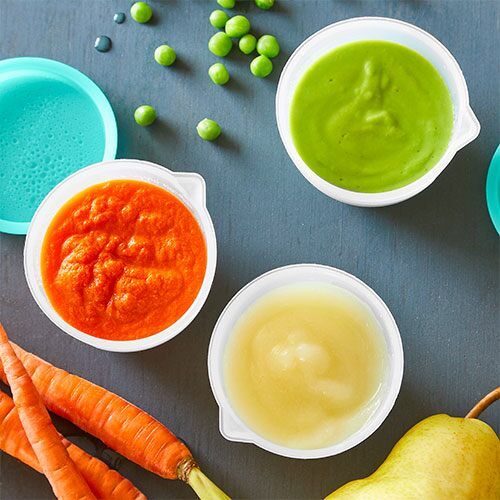 nine0022
nine0022
Usually the first food is vegetable puree or monocomponent gluten-free cereals, dairy or dairy-free. Over time, cereals containing gluten, supplements from fruits and berries, and also consisting of several cereals are added. A six-month-old child can already be given several types of vegetables and cereals. Also, at about six months, they begin to give meat puree, then fruit, and from eight months - fish. A child from seven months is allowed the yolk.
From the age of 12 months, complementary foods already make up the majority of your baby's diet. At this age, it is especially important to diversify the child's diet: he can be given soups with small pieces of vegetables, meat, fish and cereals. nine0007
Information
During the first feeding, the baby's eating habits are laid, and it depends on the parents how correct they will be. Often, mothers introduce fruit juices into complementary foods too early. And because babies have an innate preference for sweet tastes, they can become naughty and stop eating the unsweetened foods they need, especially vegetables. Unhealthy taste habits are formed, which can later provoke obesity. nine0005
Unhealthy taste habits are formed, which can later provoke obesity. nine0005
Domestic doctors are concerned about such irrational nutrition of young children - due to the wrong approach to nutrition, many babies experience a deficiency of vitamins and an excess of fast carbohydrates.
How to choose baby foods
Finding the right foods for your baby is not an easy task. Store shelves are bursting with boxes, jars and bottles, and manufacturers write on every second package that the baby will be healthy, strong and cheerful after feeding. Of course, the baby will receive the necessary substances, no matter what product his parents choose, because all the production of baby food is strictly controlled by the state. By the way, Russia has some of the most stringent requirements for the quality of baby food in the world. nine0007
However, products for children differ in their properties. It is necessary to select food so that by the end of the first year of life the baby has actively developed chewing skills and an interest in independence, and the diet of complementary foods is reasonably varied.
For children from one to three years of age, the diet should be even more varied. It is important that the child receives daily something new from the main food groups: dairy, vegetables and fruits, meat and fish, cereals, butter and vegetable oil. Of course, the baby's diet should be expanded taking into account his state of health. nine0007
When organizing the nutrition of a child from the moment of introduction of complementary foods and up to three years, a mother needs not only to know what can be fed, but also to consider what foods should not be included in the diet. Among the prohibited products for children under three years of age:
- any mushrooms, vegetables and fruits in a marinade;
- pickles, preserves in tomato sauce;
- commercial juice concentrates, carbonated drinks, coffee and strong tea;
- various condiments - mustard, ketchup, hot sauces, horseradish, pepper, vinegar, mayonnaise; nine0022
- products containing flavors, industrial colors, including chewing gum;
- margarine and refractory fats - lamb, pork;
- chocolates, sweets and other sweets.

To choose the right baby food, you need to know exactly what you should pay attention to and what you don't need to worry about.
When choosing mixtures, it is important to check:
- Absence of palm oil. Formula manufacturers may use palm oil (more specifically palm extract) because, like breast milk, it is rich in palmitic acid. However, in human milk, palmitic acid is in the beta position, while in palm oil it is in the alpha position. Such alpha-palmitic acid can interfere with the absorption of calcium and fats and is generally less well absorbed by the child's body. This can negatively affect the work of the intestines, lead to constipation, regurgitation. Milk fat is better suited for baby food as a source of palmitic acid[4][5]. nine0022
- Protein ratio. Breast milk protein is primarily whey proteins and casein. A child needs both types of protein, while proteins are easily digested, which cannot be said about casein.
 If baby food contains a lot of casein, it stays longer in the digestive tract, which can cause problems with the baby's stool.
If baby food contains a lot of casein, it stays longer in the digestive tract, which can cause problems with the baby's stool. - The presence of additional functional elements in the composition - lutein, nucleotides, pre- and probiotics. The task of lutein is to protect vision from ultraviolet rays. Nucleotides are low molecular weight compounds that promote the growth of beneficial bifidobacteria in the intestines. And pre- and probiotics in the composition of infant formulas help to establish comfortable digestion. nine0022
When choosing complementary foods, pay attention to:
- Age appropriate. It is important that in the diet of a child under three years of age who receives complementary foods, special children's products predominate - in their composition the components are selected taking into account the age-related needs of the baby's body. It is impossible at an early age to transfer children to "adult" foods like pickles, smoked foods, fast food, and so on.

- Fortified products. nine0005 It is important that the composition contains vitamins and minerals. The National Child Nutrition Optimization Program recommends choosing complementary foods that contain elements designed to prevent anemia, rickets, and vitamin deficiencies.
- For a varied diet. The menu for a baby up to six months is quite monotonous. But as they grow older, the baby needs more various nutrients - proteins, carbohydrates, fats, vitamins, minerals.
- For the individual reaction of the baby. nine0005 If the child is already receiving complementary foods, then it is worth introducing a new product only after the previous one has been fully introduced. If the baby is allergic to the product, then it should be administered carefully, carefully checking the reaction of the body.
Ingredient safety testing is optional. Of course, the content of any "chemistry" in the product for feeding a child, whether it be a mixture or complementary foods, is unacceptable. There is no need to worry about this: baby food is carefully checked. If it is registered on the territory of the Customs Union and hit the shelves, then it complies with SanPiN 2.3.2.1940-05 and there will be no "prohibited" components in its composition. Also, contrary to popular misconception, in Russia it is forbidden to use GMOs in children's products.
There is no need to worry about this: baby food is carefully checked. If it is registered on the territory of the Customs Union and hit the shelves, then it complies with SanPiN 2.3.2.1940-05 and there will be no "prohibited" components in its composition. Also, contrary to popular misconception, in Russia it is forbidden to use GMOs in children's products.
Note
Baby food in jars (usually mashed potatoes) has a short shelf life after opening because it does not contain preservatives. However, before the jar is opened, the products can stand for quite a long time on the shelves of stores or in the refrigerator at home. This is possible thanks to a special production technology, sterilization and vacuum packaging. If a soft pop is heard when opening the jar, this is a good sign: the puree is not spoiled. But products in jars with swollen lids or a protruding bottom should not be used: microorganisms already multiply in such food, it is not suitable for food.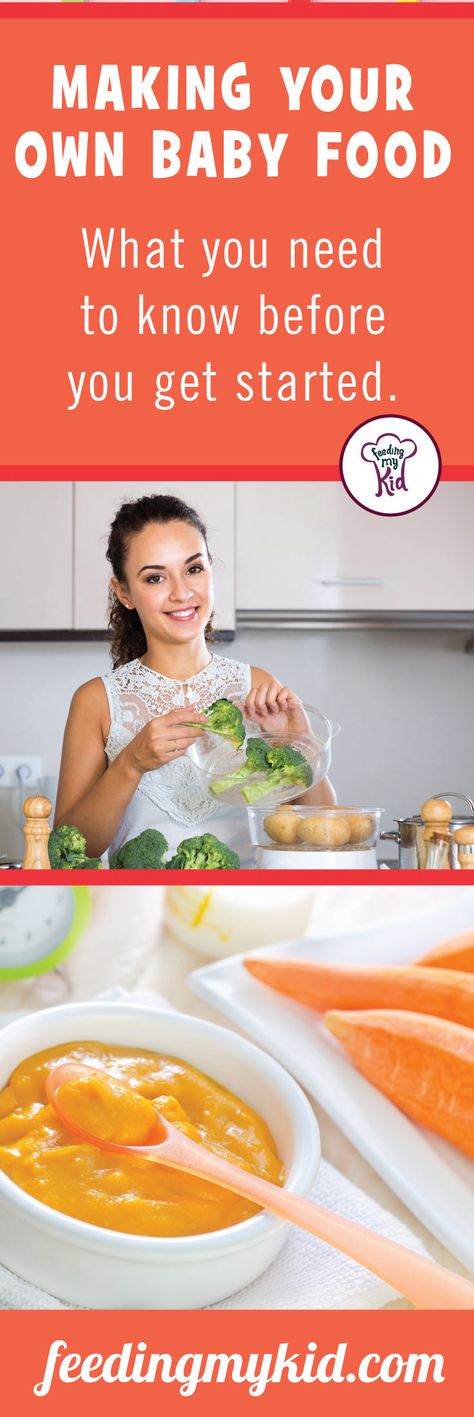 nine0005
nine0005
Features of the choice of dairy products
It is necessary to choose dairy products for babies, following the doctor's recommendations. The specialist will take into account the health of the baby, especially if he is allergic to cow protein. In Russia, such an allergy occurs in 30–40% of children [6]. Such a reaction may occur due to hereditary predisposition and immaturity of the organism. But most often, allergies go away when the child grows up.
Goat milk baby food may be a suitable option for young children with a predisposition to allergies. Its protein is perceived by the body better than cow's: alpha-s1-casein, contained in large quantities in cow's milk, makes a product based on it difficult to digest - food stagnates in the baby's gastrointestinal tract, motor skills are disturbed, as a result, allergies often occur. In goat milk, as in breast milk, there is practically no alpha-s1-casein [7]. Therefore, goat's milk, and hence the mixture based on it, are better absorbed.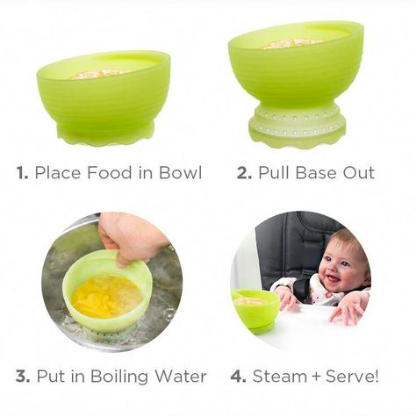 nine0007
nine0007
Of course, with the introduction of complementary foods, other dairy products will appear in the baby's diet. Unadapted fermented milk drinks, such as kefir, yogurt, biolact, can be introduced into the diet from eight months and in an amount not exceeding 200 ml. Also during this period, it is recommended to give cottage cheese - no more than 50 g per day, but according to indications, it can also be prescribed from the age of six months. Whole milk cannot be used as the main food, and it is advised to introduce it into the diet of babies no earlier than a year (in the amount of 100-150 ml per day) [8]. As mentioned above, it must be adapted infant milk or formula 3 formula.
To choose the best baby food, it is necessary to take into account the health of the baby, his tastes, as well as individual reactions of the body. Therefore, before going to the store, you should consult a doctor. The specialist will not only tell you which baby food to choose, but also give recommendations on how to make the child's diet balanced and healthy.
How baby food is made - ZAVODFOTO.RU
Nutricia was founded in 1896 in the Dutch town Zotermeer. Its founder, Martinus van der Hagen, was the first in the world to obtain the right to produce special milk for infants, similar in composition to mother's milk. In 2007, Nutricia became part of Danone's baby food division (Danone Nutricia Early Life Nutrition), and now the company's products are sold in more than 100 countries around the world. Nutricia started operating in Russia in 1994, and in 1995 acquired a baby food factory in the city of Istra and completely modernized it. Now baby formulas and cereals under the Malyutka brand are produced here. nine0007
The milk base comes to Nutricia from Ireland. It is a dry powder obtained by mixing milk, whey and vegetable oils. The mixture is stirred and then sprayed with a nozzle. Under the influence of hot air, water is evaporated from the formed particles and as a result a powder is formed. It is packed in big bags, which are simultaneously filled with nitrogen, which displaces air. This is done so that the oxidation process does not occur inside the package. The big bag is hermetically sealed, and then a second bag is put on it - for transportation. nine0007
It is packed in big bags, which are simultaneously filled with nitrogen, which displaces air. This is done so that the oxidation process does not occur inside the package. The big bag is hermetically sealed, and then a second bag is put on it - for transportation. nine0007
In the same form, another raw material enters the plant: vitamins and minerals, which are delivered from factories in the Netherlands. Nutricia works with foreign suppliers, because Russian farmers are not yet able to provide raw materials of adequate quality. All raw materials entering the plant are tested in the physical-chemical and microbiological laboratory. The second is taken out of production, again to minimize risks.
The raw material bags are then moved to a high-security area. To do this, they pass through a special lock, in which they remove the transport packaging from them and transfer them from wooden pallets to plastic ones. This area is protected from the ingress of any harmful microorganisms. Local air passes through several stages of filtration. Purified air is supplied to the room through fabric sleeves, they are easy to remove and wash. All equipment and tools passing through the gateway are disinfected. In addition, the zone of increased control is completely free of water. Wash and clean here exclusively with vacuum cleaners. All employees of the plant undergo a daily medical examination and are not allowed to work if they show mild signs of illness. Those who drive vehicles are also tested for traces of alcohol in the blood. nine0007
Local air passes through several stages of filtration. Purified air is supplied to the room through fabric sleeves, they are easy to remove and wash. All equipment and tools passing through the gateway are disinfected. In addition, the zone of increased control is completely free of water. Wash and clean here exclusively with vacuum cleaners. All employees of the plant undergo a daily medical examination and are not allowed to work if they show mild signs of illness. Those who drive vehicles are also tested for traces of alcohol in the blood. nine0007
Baby food has higher requirements for primary packaging (one that is in direct contact with the product). For this, foil is always used, which, in addition to its barrier properties, is also good because it does not interact with the product in any way. Each new supplier undergoes a quality test and each batch of material is tested for microbiology.
From here, the raw material is lifted to the fourth floor into the mixing area. There, the bags are opened, the mouth of the bags is disinfected and connected to the equipment, so that the ingredients enter it without contact with the external environment. The components are dosed using high-precision cells and then enter the blender. Any deviation will automatically stop the process. After the blender, the mixture falls on a sieve with a mesh size of 1.4 mm. This is a barrier to possible third-party inclusions in the product. For the same purpose, there is a giant magnet here. Dosing, mixing and screening takes place on different floors, that is, the process is built vertically, from top to bottom. Usually compressed air is used to transport the product through pipes, but here it falls under its own weight. nine0007
There, the bags are opened, the mouth of the bags is disinfected and connected to the equipment, so that the ingredients enter it without contact with the external environment. The components are dosed using high-precision cells and then enter the blender. Any deviation will automatically stop the process. After the blender, the mixture falls on a sieve with a mesh size of 1.4 mm. This is a barrier to possible third-party inclusions in the product. For the same purpose, there is a giant magnet here. Dosing, mixing and screening takes place on different floors, that is, the process is built vertically, from top to bottom. Usually compressed air is used to transport the product through pipes, but here it falls under its own weight. nine0007
Flour that has passed the input control is sifted and then, together with water, enters the extruder for processing. There, at a temperature of 180 degrees and high pressure, the molecular structure of flour breaks. This process is somewhat similar to making popcorn. Each particle seems to explode and becomes like a corn stick. The flour is cooked, and in parallel, due to the high temperature, all extraneous microflora dies. The resulting pellets are then dried and ground. This process allows you to save many of the nutritional properties, taste and aroma of the product. nine0007
Each particle seems to explode and becomes like a corn stick. The flour is cooked, and in parallel, due to the high temperature, all extraneous microflora dies. The resulting pellets are then dried and ground. This process allows you to save many of the nutritional properties, taste and aroma of the product. nine0007
Next, the packages are weighed and transferred to the low control area, where they are packed in cardboard boxes with spoons. Each box is marked with its own unique number, which contains full information about the product. The boxes then go through an x-ray machine where they are checked for foreign matter. If the camera sees a particle that differs in density from the rest, the pack is rejected. nine0007
The mixed product travels three floors and enters the packaging area. Packing of contents on packages happens in the environment of nitrogen. Nitrogen is a safe, inert gas that displaces oxygen from the pack, creating an airtight condition and preventing oxidation.